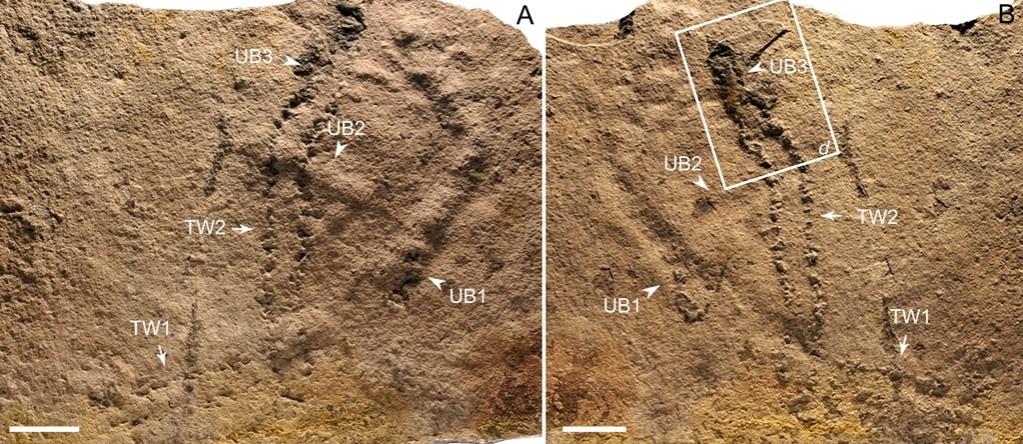
The oldest ever fossilised footprints of an animal was recently found near south China's Yangtze Gorges. While scientists are not sure exactly which beast made the footprints, the fossils have been estimated to be around 551 million years old.
In a release put out by the Chinese Academy of Sciences- Nanjing Institute of Geology and Palaeontology, researchers noted that the fossils were from the Ediacaran Period– about 635–541 million years ago. Researchers say that these prints were made by creatures with appendages and this discovery is proof that there were indeed animals with limbs in the Ediacaran period.
It was a commonly held belief in scientific circles that animals with limbs and jointed appendages did not appear and diversify till the Cambrian Explosion that took place around 541 to 510 million years ago. It was after this point that arthropods (jointed limb insects like roaches and spiders) and annelids (ringed worms) completely took over the planet. Today, these creatures are spread throughout the Earth and are among the most diverse forms of animal life on the planet, notes the report.
The research was carried out by a team from the Nanjing and Virginia Tech and the fossils were found at the Ediacaran Shibantan Member of the Dengying Formation (551–541 million years ago) in the Yangtze Gorges area of South China. The footprints found were reportedly irregular and consisted of two rows of prints that were arranged in series and in repeated groups, says the report.
Looking at the trackways and footprints, researchers concluded that the prints should have come from what are known as bilaterian animals –creatures that have a head and a tail, along with a back and a belly which in turn means they have a left and right side on their bodies. That, in turn, means they have paired limbs that they used to raise themselves above and out of the water and crawled on the land.
The actual animal that made these fossil prints are yet to be found and the researchers believe that it might have never been preserved.
The study titled 'Late Ediacaran trackways produced by bilaterian animals with paired appendages' was first published in the journal Science Advances.

















